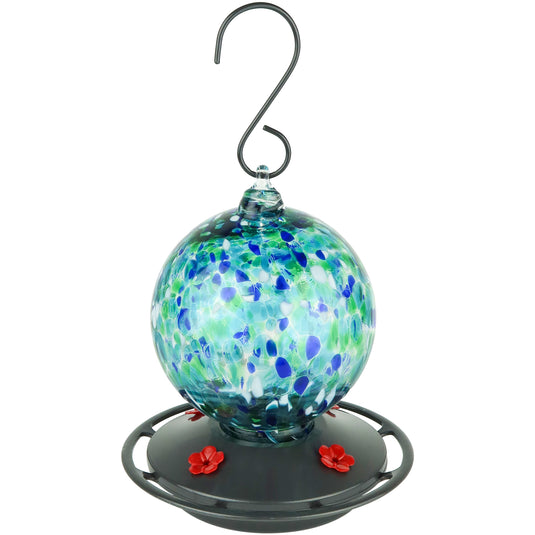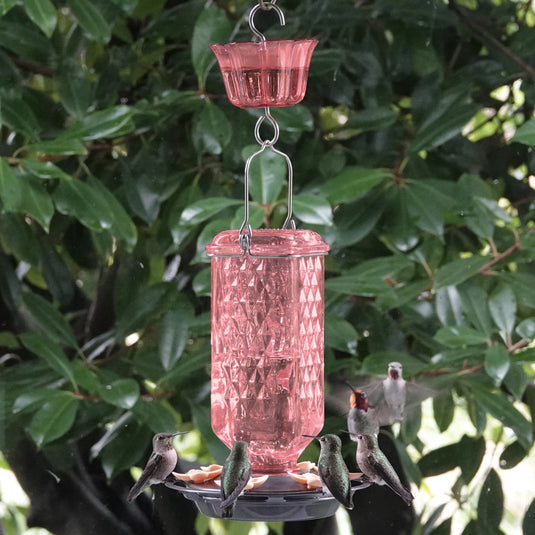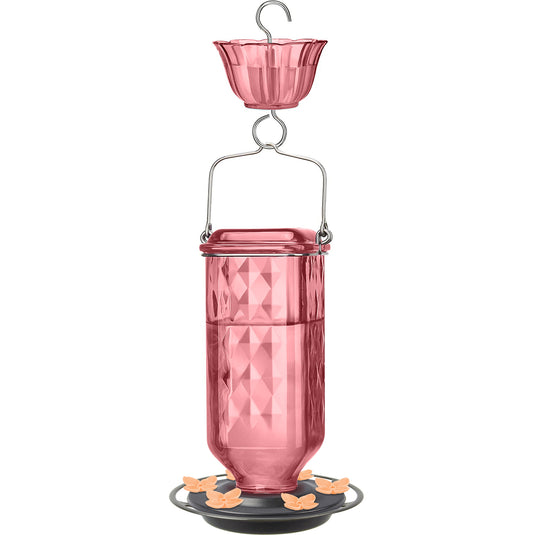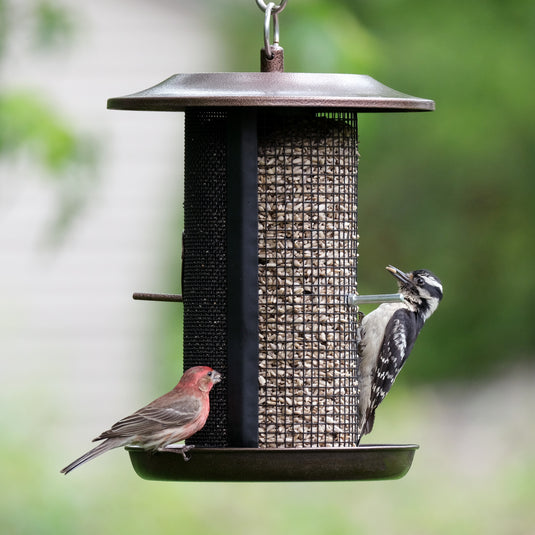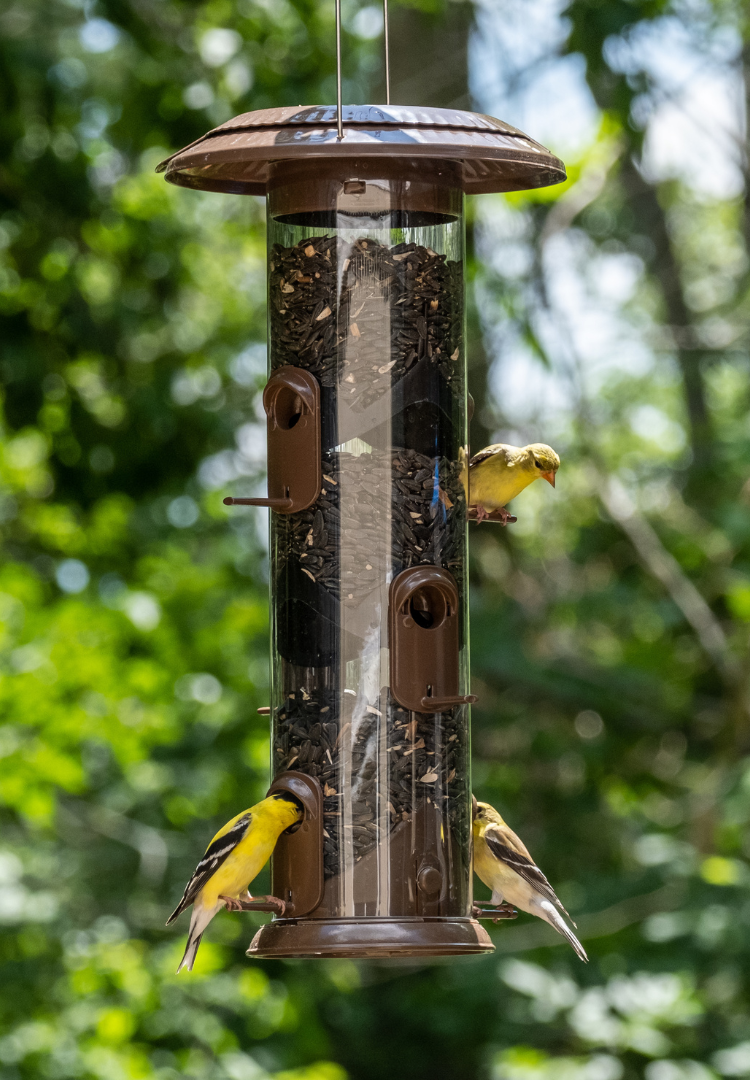Identifying Allen's Hummingbirds:
Allen's hummingbirds are rust orange and green all over. Adult males have a rust colored tail, eye patch and belly with a deep red-orange throat. Immature males and females have similar coloring with only small spots of iridescent bronze on their throats.


Left: male. Right: female.
Similar Species:
Both Allen's hummingbirds and Rufous hummingbirds share many of the same physical characteristics and can be extremely hard to distinguish in the field, even by experienced birders. The only true way to decipher between these species is by subtle differences in the shape of their tail feathers. In the Allen's hummingbirds, all tail feathers are narrower than their Rufous counterpart. The Rufous hummingbird has a subtle but distinct notch at the top of the R2 feather (second from center).

Where Allen's Hummingbirds Live:
When the earliest signs of spring begin to show, as early as January, Allen's hummingbirds make their appearance in their breeding grounds along the western coast of California and Oregon. Males can be found in open areas of coastal scrub where they can be seen perched conspicuously keeping a close watch on their territory. The females visit these areas to find a mate but will retreat into the forest or thickets to build her nest and raise the young. There are two subspecies of Allen's hummingbirds; one which stays in California year-round and a second which migrates to Mexico during the winter months. These two subspecies are not distinguishable in the field.
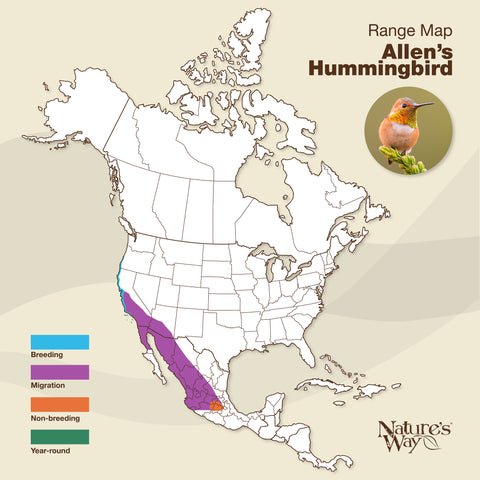
What Hummingbirds Eat:
Allen's hummingbirds feed on nectar from tubular flowers and insects which they catch during flight or may even pull from spider webs or plants. Hummingbirds will also readily consume artificial nectar from hummingbird feeders. Nectar can be made using a ratio of 1 cup white sugar to 4 cups water. The use of dye or food coloring in artificial nectar is not necessary for attracting hummingbirds to a feeder and is not recommended due to the sensitive nature of these tiny birds.
How to Attract Allen's Hummingbirds to Your Feeder:
Placing feeders near flower beds or planters may help attract more
hummingbirds to your feeder. For the best chance of hummingbirds discovering your feeder, it is recommended to have it up and ready before they return from their winter migration. Be sure to research the migratory pattern of hummingbirds in your area to make sure you haven’t put your feeder out too late, since this can cause them to overlook it later in the season. Feeders with built in perches can help these tiny birds conserve energy and feel more comfortable feeding, prolonging feeding times and increasing hummingbird viewing.

Nesting:
Constructed from plant down from willows and plants in the sunflower family and held together using spiderweb strands, female Allen's hummingbirds build their nests anywhere from 2 to 50 feet off the ground. Nests are usually located on a branch near shady streams. Small strands of grass are woven together to form an outer layer which is camouflaged with pieces of lichen and moss.
A clutch size is typically 2-3 eggs that are roughly 0.3 inches wide and 0.5 inches in length. The tiny eggs are white and weigh less than half a gram. Eggs hatch in 17 to 22 days and will fledge the nest after an additional 22 to 25 days. There can be 1 to 3 broods per year depending on weather and location.
Related Articles:







